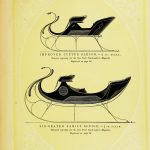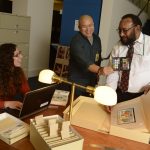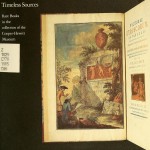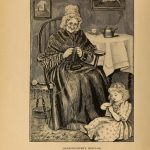
No heated seats or four wheel drive here! If you think you had a hard time dealing with the ice and snow that hit much of the U.S. recently, be grateful that at least your mode of transportation had a roof!

Entrepreneur and philanthropist Andrew Carnegie once said that “a library outranks any other one thing a community can do to benefit its people. It is a never failing spring in the desert.”
The Smithsonian Libraries are passionate about renewing our commitment to serving the global community as a public and academic library system. We have enhanced our digital accessibility, public programs, and events while adding new fellowship opportunities, resulting in more in-person traffic than ever before. This increase in activity is made possible thanks to the continued support of our dedicated donors.

The invisible boundary between the cataloging systems of museums and libraries has traditionally presented challenges to the integration of intrinsically-connected content. The achievements of Europeana and Australia’s Trove systems demonstrate the power of combining museum and library catalogs on a large scale. Cooper-Hewitt’s recent Historical Publications initiative combines the resources of the Museum and Library, focusing on past museum publications and successfully bridging two divergent collection systems.

On Monday, January 21, 2013, we will celebrate the 57th Inauguration for the President of the United States of America. You will remember that President Obama’s inauguration in 2009 marked the first swearing-in of an African American to lead our country. You also may recall some of the details about the very first inauguration on April 30, 1789, when George Washington was sworn in as president of our new nation. But have you ever wondered about some of the other “firsts” related to this historic event? We have gathered together some bits of information about presidential inaugurations that we hope will enlighten and entertain.

In an earlier post in December 2011, we announced the release of the Taxonomic Literature II (TL-2) search tool that allows anyone to search and read its fifteen volumes. One of the things we mentioned in that post was our plans to open the TL-2 dataset to searchability and reuse by providing it as Linked Open Data (LOD).
This time, we’ll discuss details of our plans for Linked Open Data, some of the data we are extracting, and the challenges in creating data for a linked open data set.

In 1892, for 50 cents or 2 shillings, you could have purchased this month’s Cultural Heritage Library selection and wowed all your friends with the latest and most comprehensive guide to knitting on the market to date. The Art of Knitting (1892) was published as a companion to The Art of Crocheting and contains simple instructions for beginners as well as more complex fancy stitches and patterns for more seasoned craftsmen. As it stands, however, we are well into the Electronic Age and you can impress your friends and save your cash by downloading this title for free from the Internet Archive!

The conservation lab received, from the American Art Museum/National Portrait Gallery Library, a first edition of the first Bauhaus exhibition catalog: Staatliches Bauhaus, Weimar, 1919-1923. In addition to being a rare copy of this catalog, it is inscribed to the painter Werner Drewes by his Bauhaus teacher, Wassily Kandinsky.
The book was in disrepair with the covers detached. A spine “replacement” fashioned out of a piece of electrical tape had left tape residue on the Herbert Bayer designed cover. Additionally, the paper used for the catalog was highly acidic and discolored and the acidic clay coated plates were chipping.